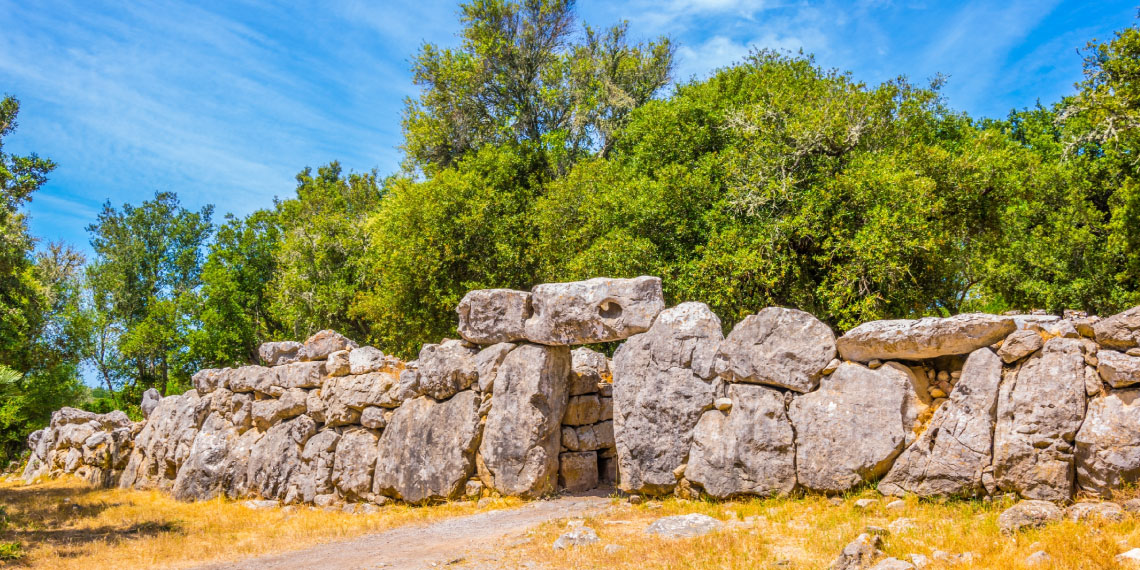Ses Paisses – the Talaiot settlement near Artá

Seldom mentioned in guidebooks, the excavation site of the Talaiotic village of Ses Paisses is one of the most important testimonies to the Talaiotic culture and Mallorca’s early history. The excavation site is located southeast of the outskirts of Artá on a hill surrounded by old holm oaks, about 120 m above sea level. Researchers date the village to the period from 1,000 B.C. to about 100 B.C. The excavations bear witness to the megalithic culture of the Balearic Islands. The settlement has a 364 m long, double-walled and 3.6 m wide enclosure wall, which is pierced by three entrance portals. The portals are up to 3.50 m high and are made of stones weighing up to eight tonnes. They are crowned by a horizontal lintel. The oldest building in the settlement is certainly the tower, the talaiot, which is 12 m in diameter and 4 m high. The tower is connected to neighbouring buildings by two corridors. There is a horseshoe-shaped room, 132 m² in size, where several fireplaces, bone remains and iron tools were excavated. Further on, there is the Hypostylos Hall, which must have served the villagers for meetings and other communal purposes.
The settlement of Ses Paisses has been known for centuries, but its importance was not recognised until 1946, when it was declared a cultural monument as an archaeological site. The well-known Italian archaeologist Lilliu, who had led similar excavations in Sardinia, was responsible for the excavations at Ses Paisses from 1959 to 1963. At the end of the 20th century, the Mallorcan archaeologist Javier Aramburu took over the excavation work and made further discoveries. So-called excavation campaigns take place every year, but they always suffer from insufficient funding, so there is still much to discover at Ses Paisses.
Ses Paisses | Lloc Poligon 13, 113 | 07570 Artá | Tel. +34 619 07 00 10.


 Deutsch
Deutsch Español
Español